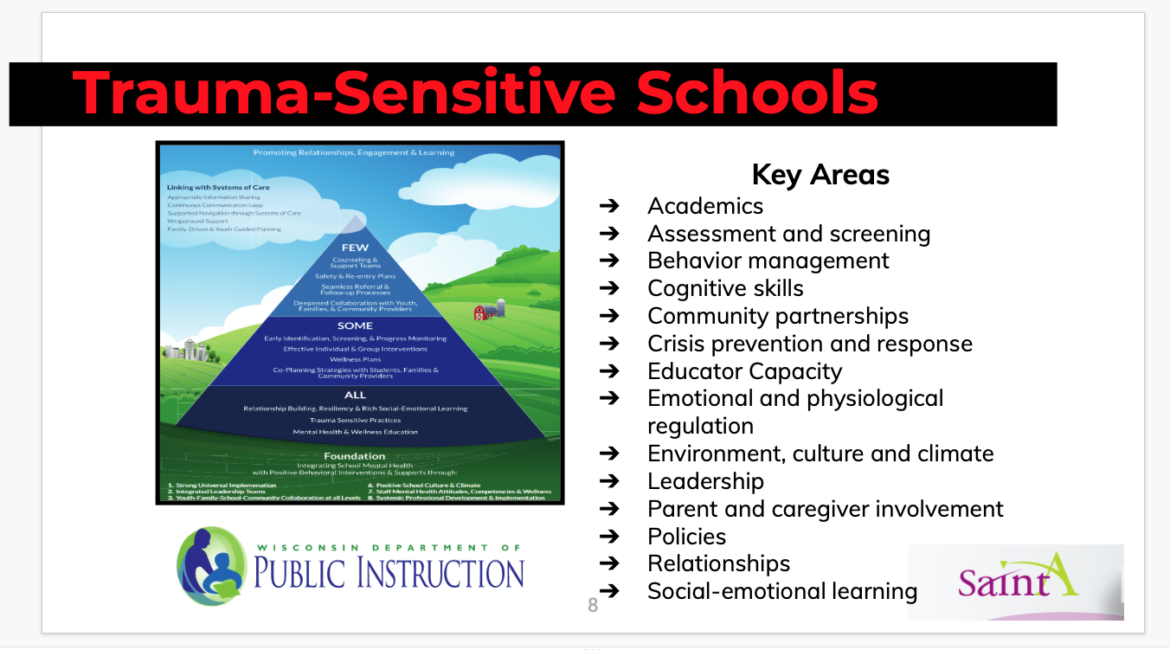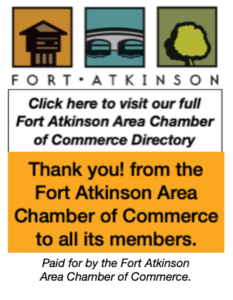By Kim McDarison
School District of Fort Atkinson Board of Education members learned earlier this month about updates made to the district’s strategic plan and achievements made by the district’s learning communities.
School District Superintendent Rob Abbott gave the update, which preceded a second presentation explaining data obtained recently through a districtwide survey. (A story about the survey data is here: https://fortatkinsononline.com/school-survey-data-released-75-of-respondents-say-district-should-address-needs-now/.)
Aided by slides, Abbott began his presentation by sharing the district’s updated vision and mission statements.
Abbott read the district’s new vision statement, saying it is: “Achieving distinction in all we do,” and the mission statement, which is to: “Cultivate an inclusive high-performing culture of growth and community.”
He next enumerated three goals identified within the district’s strategic plan. They are:
• High Performance: All schools, as well as the district, will achieve a state of Wisconsin accountability rating of “Significantly Exceeds Expectations” no later than the 2025-26 report card with evidence of annual growth.
• Inclusive Culture of Growth: Our learning community will exemplify an inclusive culture of growth responsive to our learner and community needs.
• Community Distinction: The district will be the preferred educational option in the region as evidenced by annual growth in the pupil count and open enrollment.
“One of our efforts related to our new strategic plan is to more regularly share dates, examples and areas of focus related to those three main goal areas,” Abbott said, adding that next month, the district will focus on the goal area of ‘distinction.’
Part of recognizing distinction was celebrating successes already achieved within the last few months by students and staff, he said.
“This evening however, I would like to provide our board and larger community with just a glimpse of a few of our efforts related to an inclusive culture of growth,” Abbott continued.
Pointing to the pandemic, he said, in some ways, it was “the catalyst that was needed to push some comments from the ‘someday’ column to the ‘implement now’ list. Our teacher-leader structure, known as our 1Fort Success Teams, were formed in 2020 with 26 teacher-leaders representing each of our learning communities. With a leader from kindergarten through pupil services, art, CTE and more, we have a teacher-leader plugged into each and every one of those professional learning communities throughout the entirety of our school district.”
Through the team structure, Abbott said, the district’s staff has “moved onto developing a true way to work together as a team, to problem solve and lead their professional learning communities into the future (and) to improve teaching and learning for our students.”
Pointing to a slide, Abbott shared the following:
• The district has 26 teacher-leaders leading Professional Learning Communities (PLCs) inclusive of every certified educator.
• Each PLC has set an “amplify” goal to improve teaching and learning relative to their role in the three goals of the strategic plan.
• Success Team Leaders and PLCs meet monthly for professional learning and collaboration.
Adaptive school training
Abbott next talked about “adaptive schools training,” which, he said, “We started with our 1Fort A team, or the administrative team, last year as we strove to change, improve, unify and create productive interdependence in collaboration in governance of our 1Fort Learning Community.
“Given the constraints — COVID — the typical training format was modified a bit to be fully virtual. Nonetheless, it was great learning and demonstrates our desire to stretch our leadership team. Then, keep stretching our leadership team as we evolve in the future. But what was most exciting was that we were able to provide four full days of adaptive schools training this last summer for each and every one of our 1Fort Success Team teacher-leaders. Administrators did that critical learning along with all of our teacher-leaders.”
The goal of adaptive schools training, Abbott noted, “is (to) have a consistent framework of learning, leadership and operations for all leaders in our district to maximize leadership and best leverage our PLC structure to grow our collective efficacy of all of our 1Fort educators.”
The district completed its four-day training last summer, Abbott noted.
During the seminar, staff explored such concepts as: What makes teams effective? and learned how to develop skills as facilitators in both formal and informal settings and large and small groups.
“Adaptive schools is the ‘how’ of professional learning communities; how to productively engage groups, how to lead them, and how to facilitate them for improved leading, teaching, and learning. Adaptive schools will continue to be the underpinnings of leadership in the 1Fort learning community,” Abbott said.
10 ‘Mindframes’
Abbott next shared information about a construct in use by the district called “10 Mindframes for Visible Learning.”
According to Abbott: “The Mindframes are built on science, or what teaching strategies yield the greatest impact on student learning. Systematically, we began the year with Mindframe 3, that is: ‘I collaborate with others about my progress and impact,’ and that relates to the collective efficacy that, if you recall back to the convocational lunch, that was a very key piece of what we wanted to begin this school year.
“And now we are shifting to Mindframe 9: ‘I build relationships and trust,’ which leads nicely into our next area related to our inclusive culture of growth goal.”
Trauma-sensitive schools
Abbott spoke about “Trauma-Sensitive Schools,” a concept, which, he said, shares 14 key areas.
“Trauma-sensitive training is part of a larger national movement based around how we go about providing services to children as well as families. the Wisconsin Mental Health Framework includes trauma and sensitive practices as a universal support for all students and families in key areas. And also, in how it is connected to regular learning. Trauma-informed care is the parallel in a connected movement happening in mental health, human services, the medical field, law enforcement, and all across our community. It brings a diverse system to the table around a common cause and with a common language which truly has potential to be transformative,” Abbott said.
He continued: “Trauma sensitive schools have become best practices for schools due to the emerging understanding and the high prevalence of trauma and its impact on the developing brain and on academic performance and behavior in the classroom. Consider what happens with little kids who fall and skin their knees. Their parents’ reaction has the potential to make a difference in just how hard that hurts, and just how long that hurts as well. The same holds true for trauma. Response, resiliency and support matter, and we recognize trauma when both exposure happens and that exposure overwhelms and creates difficulty. Trauma sensitive schools recognize the need for these strategies and supports to be universal, and part of what all students receive, but also recognizes that some students may need additional support.”
With that goal in mind, Abbott said, selected members of the district’s staff within each building have been trained and will share that training with their colleagues.
Course offerings
Abbott identified the district’s “growing catalog and ever-changing course offerings,” as another initiative created to meet the demands of “continual improvement.”
Said Abbott: “Our school district continues to develop, hone and evolve a wide range of course offerings throughout our entire K-12 learning community. Just as our core programs are under constant review and change to meet ever-changing needs of our students and community, so are our college and technical vocation courses … Our investment in instructional technology, in art, in music, in integrated STEAM or science, technology, engineering, art or math, … other crucial learning areas, continue to be of paramount importance as we strive to find a contemporary balance of learning opportunities for our students.”
Donovan Group and survey
Abbott next introduced representatives from the Donovan Group, the organization which helped the district develop its recent districtwide survey and analyze the collected data.
The survey was well received by the community, the company’s president and founder, Joe Donovan, said, noting that 998 surveys were completed by district stakeholders.


Two images above: Information above was provided earlier this month by School District of Fort Atkinson Superintendent Rob Abbott as part of a presentation updating the district’s achievements towards goals outlined within its strategic plan. Within his slide presentation, Abbott talked about 10 Mindframes for Visible Learning. Contributed photo.
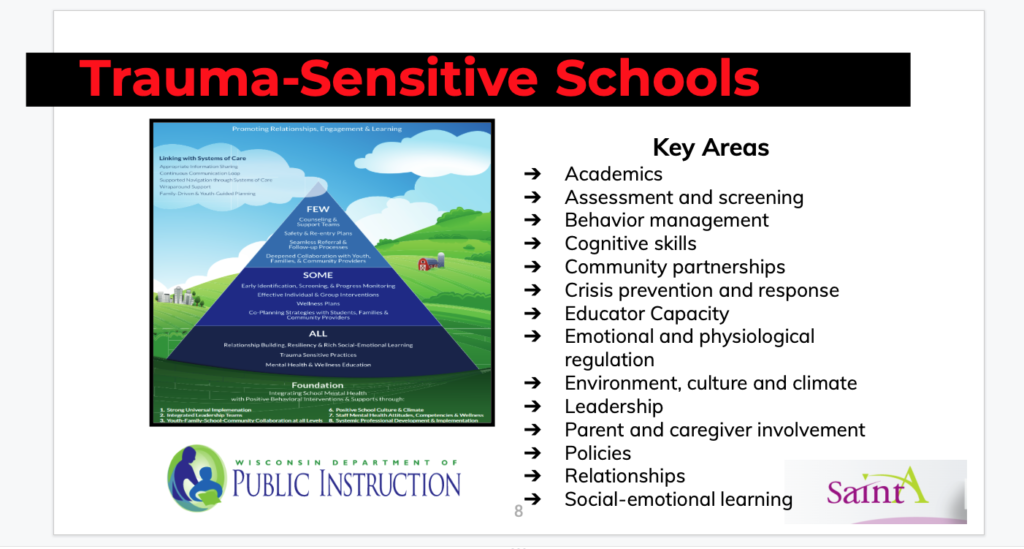
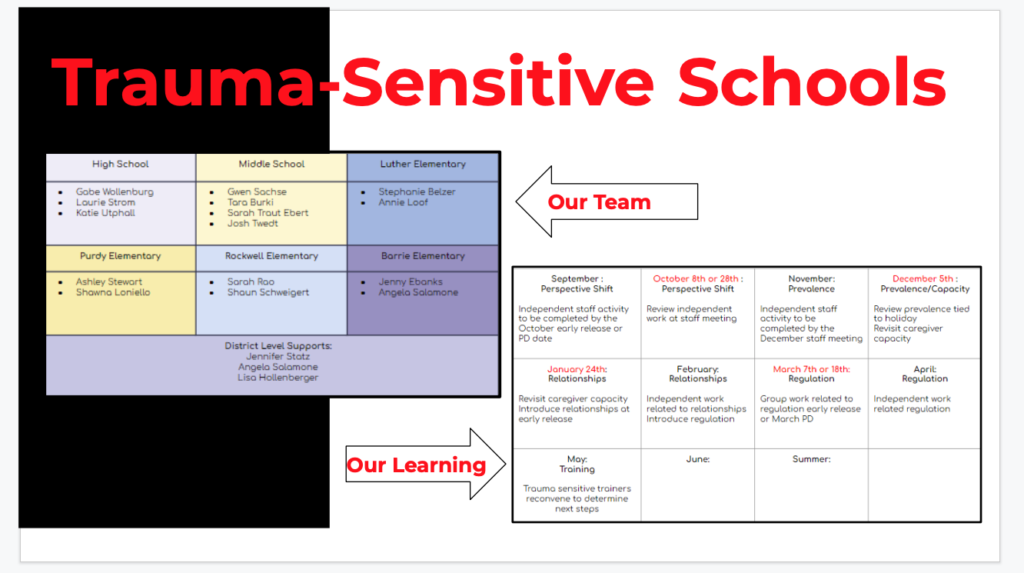
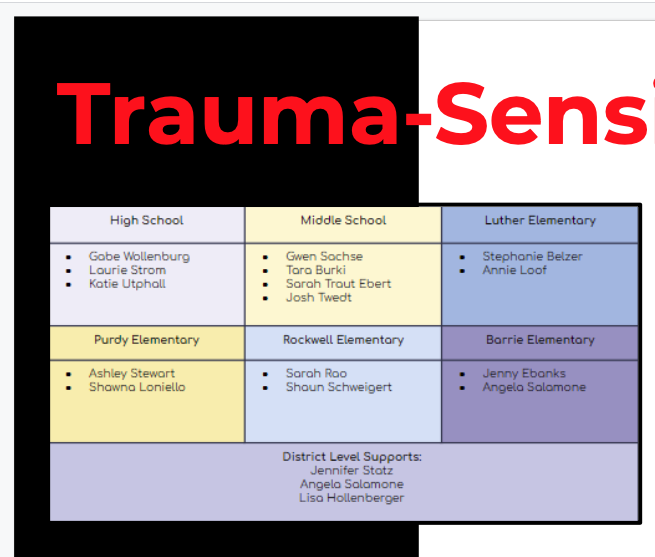
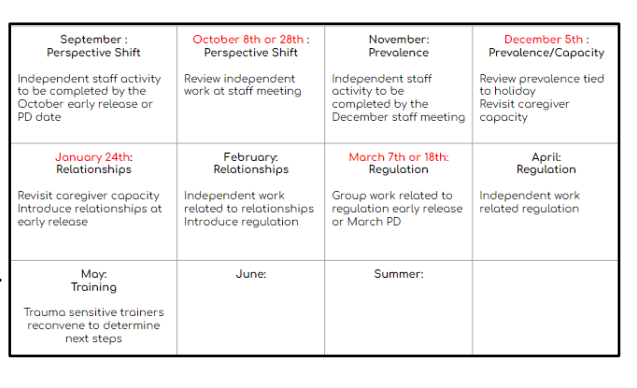
Four images above: Fort Atkinson School District Superintendent Rob Abbott shares information about Trauma-Sensitive Schools, which he described as a national movement to provide services to students and families. The graphics show an overview of the Wisconsin Mental Health Framework, and selected staff members within the district who have engaged in the training process. Contributed photos.


Two graphics above: Fort Atkinson School District Superintendent Rob Abbott introduced Donovan Group president Joe Donovan, during his strategic plan update. A presentation about information gathered in November from community stakeholders through an online survey followed. The second presentation, with survey data, is here: https://fortatkinsononline.com/school-survey-data-released-75-of-respondents-say-district-should-address-needs-now/. Contributed graphics.
This post has already been read 1445 times!
